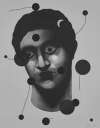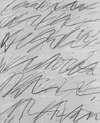Peter
Doig
Peter Doig, through his enigmatic landscapes, has become a pivotal figure in Contemporary Art. If you’re looking for original Peter Doig prints and editions for sale or would like to sell, request a complimentary valuation and browse our network’s most in-demand works.
Notable series
Peter Doig art for sale
Discover Peter Doig prints for sale, exclusively available through our private network of collectors. Explore signed and unsigned screenprints, lithographs, digital prints, and rare editioned proof prints by era-defining blue chip artists.
Sell Your Art
with Us
with Us
Join Our Network of Collectors. Buy, Sell and Track Demand
Biography
Renowned for his evocative landscapes that blend memory with imagination, Peter Doig is a pivotal figure in contemporary painting. Born in Edinburgh in 1959, Doig's work is celebrated for its enigmatic quality and rich textures, often exploring themes of displacement and the passage of time. His distinctive style has situated him as one of the most original painters emerging in the late 20th century, bridging the gap between abstraction and figuration.
Doig spent his early years in Trinidad and Canada before moving to London in the late 1970s, where he attended the Wimbledon School of Art, followed by Saint Martin's School of Art, and finally the Chelsea College of Arts for his master’s degree. It was during these formative years that his signature approach began to take shape, marked by a painterly exploration of personal history.
Throughout his career, Doig has been known to revisit certain motifs, such as canoes and cabins, which are often set against a backdrop of hauntingly serene landscapes. His work is characterised by an interplay of light and texture, with a palette that ranges from muted tones to vibrant hues. Doig's technique, involving layers of paint applied then scraped away, creates depth and enigma within each canvas.
Doig's oeuvre is not limited to a single period or style; rather, it is defined by continuous evolution. After establishing his reputation in London, he returned to Trinidad in 2002, where the tropical environment began to infiltrate his work, introducing new scenery and altering his use of colour. Returning to Trinidad in the early 2000s, his compositions became more open, with surrealistic figures and symbols front and centre. For example, Night Bathers (2019) depicts a woman drenched in blueish light staring out from the beachy foreground, while in Painting on an Island (Carrera) (2019), we see a seated man close-up in profile, as he paints under a half moon, his hair a thick knot of paint.
This directness allows Doig to express—loud and clear—his deep appreciation of Trinidadian culture. In interviews, he speaks of himself as an outsider there, as a white, UK-born artist in a former British colony. His work, he says, should question his presence there.
Doig's printmaking, particularly evident in his Zermatt D1 series, showcases his ability to translate the painterly qualities of his canvases into the medium of print. The Zermatt D1 prints reflect his fascination with landscapes and the interplay of light and shadow. This series allows him to combine the texture of his distinctive painterly techniques with the precision of giclée printing, contributing to the versatility of his broader body of work.
His significant contributions to the art world have been recognised with major exhibitions at prestigious institutions including the Musée d'Art Moderne de la Ville de Paris, the Scottish National Gallery, and Tate Britain. Doig's achievements include a nomination for the Turner Prize in 1994 and his painting White Canoe selling at Sotheby's in 2007, which at the time set a record for a living European artist.
Doig's legacy is one of an artist who defies categorisation. His paintings, often described as dreamlike and cinematic, have exerted a profound influence on the Contemporary Art scene. Doig’s impact lies in his ability to transform the act of recollection into a visual language with emotional resonance.














































